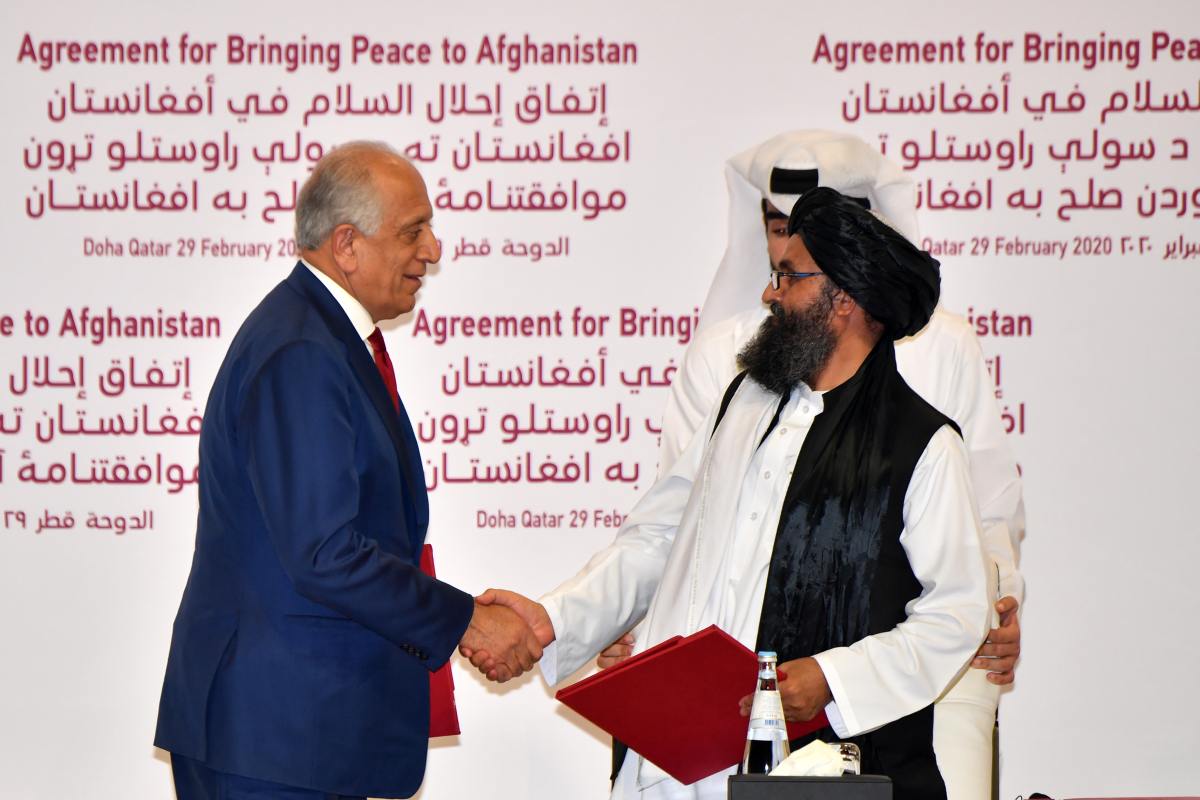The landmark truce is in tatters. Barely a week after the United States of America and the Taliban concluded a deal in Doha, the postagreement scenario is as fraught as it has been in fractured Afghanistan for decades.
Quite the most intriguing feature this time is that the American blitz has happened hours after President Donald Trump spoke to the top Taliban commander, Mullah Baradar Akhund. The world has been kept guessing about what transpired through the either between Washington DC and Afghanistan’s restive Helmund province. So far unsubstantiated is the claim of the US forces in Afghanistan, to the effect that the Taliban fighters were “actively attacking the checkpoint of the Afghan National Security Forces”. Not many will buy the argument that this is a “defensive strike” – a contradiction in terms – to “disrupt the attack”. Contradictory too is the somewhat saccharine assurance that Washington is “committed to peace while defending the Afghan forces”.
Advertisement
It would be hard to resist the conclusion that the US has triggered the violation of the peace deal, indeed eleven days after the two sides agreed to maintain the peace in a tormented land except that the Taliban, as past record shows, is quite capable of launching attacks even while talking peace. The other possibility of course is that sections of the Taliban are not on the same page as its leaders. Its leadership had promised at the high table in Doha that they would curb violence and not increase attacks.
The Taliban’s renewed offensive has been countered by the US and the irony of the geostrategy shall not be missed by the international community. A critical aspect of the latest Doha round is that the US will withdraw its forces, presumably if the Taliban ensures peace. Wednesday’s counter-mobilisation by the US in response to the Taliban offensive signifies the worst of both worlds. The Taliban praxis is confusing. Though officially it has said that it will hold its fire, it did pledge on Monday to resume normal operations against Afghan forces. It has neither confirmed nor denied responsibility for the offensive against US forces. Wednesday’s aerial bombardment by the US has effectively binned the militant claim that “it is implementing all parts of the agreement one after another in order to keep the fighting reduced”.
The fighting, more accurately, has been precipitated less than a fortnight after the two sides were seemingly engaged in a convoluted exercise in self-deception. There is much that is fogbound in Afghanistan today. If indeed a drone had targeted a Taliban position, there were no losses on the militant side though a fundamentalist team was sent to the area. There is consensus on both sides that there has been a “major violation of the agreement”. It is fervently to be hoped that the American blitz will not signify the collapse of the deal. Equally, we must hope that the normally volatile situation does not spiral.











